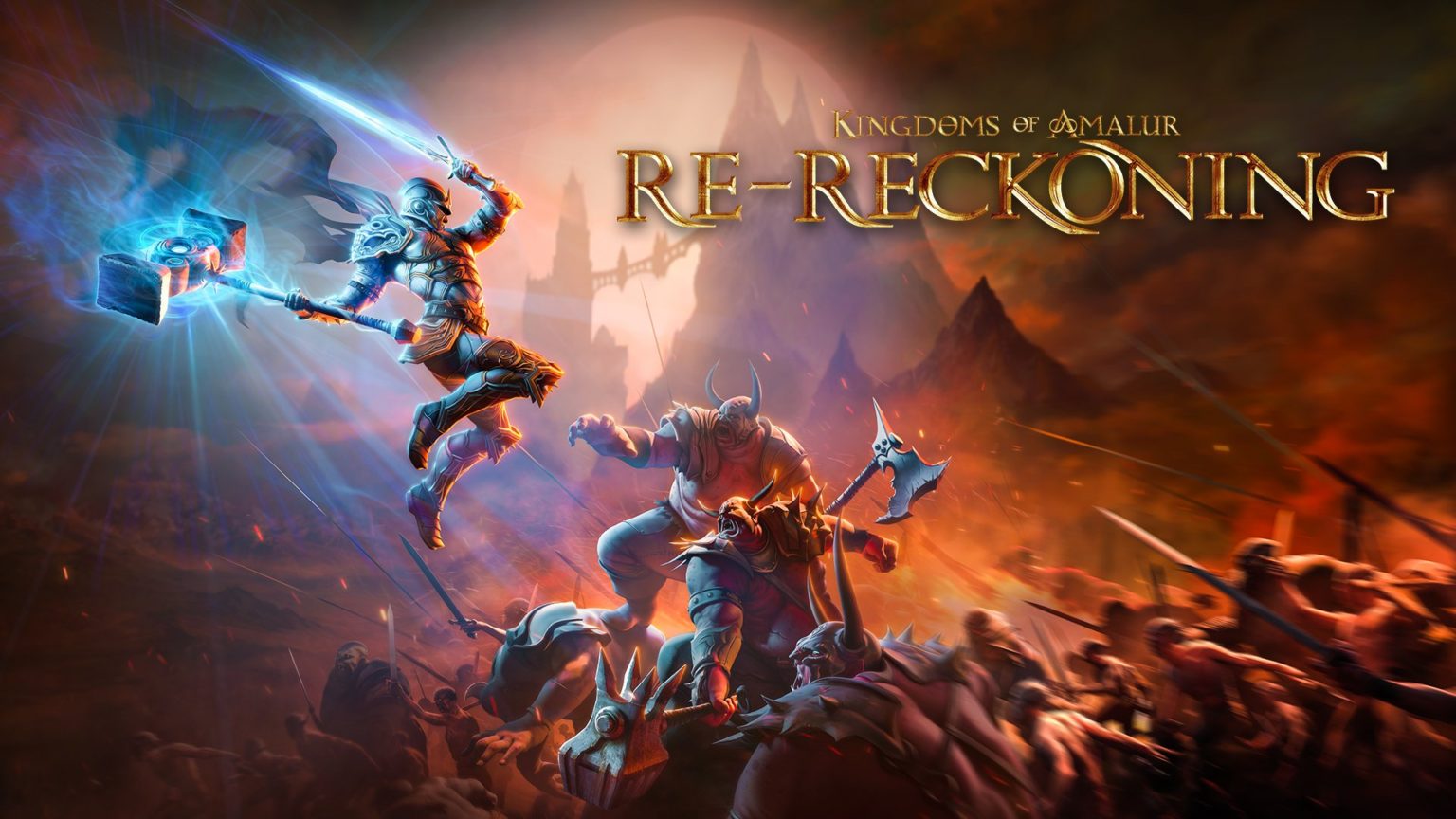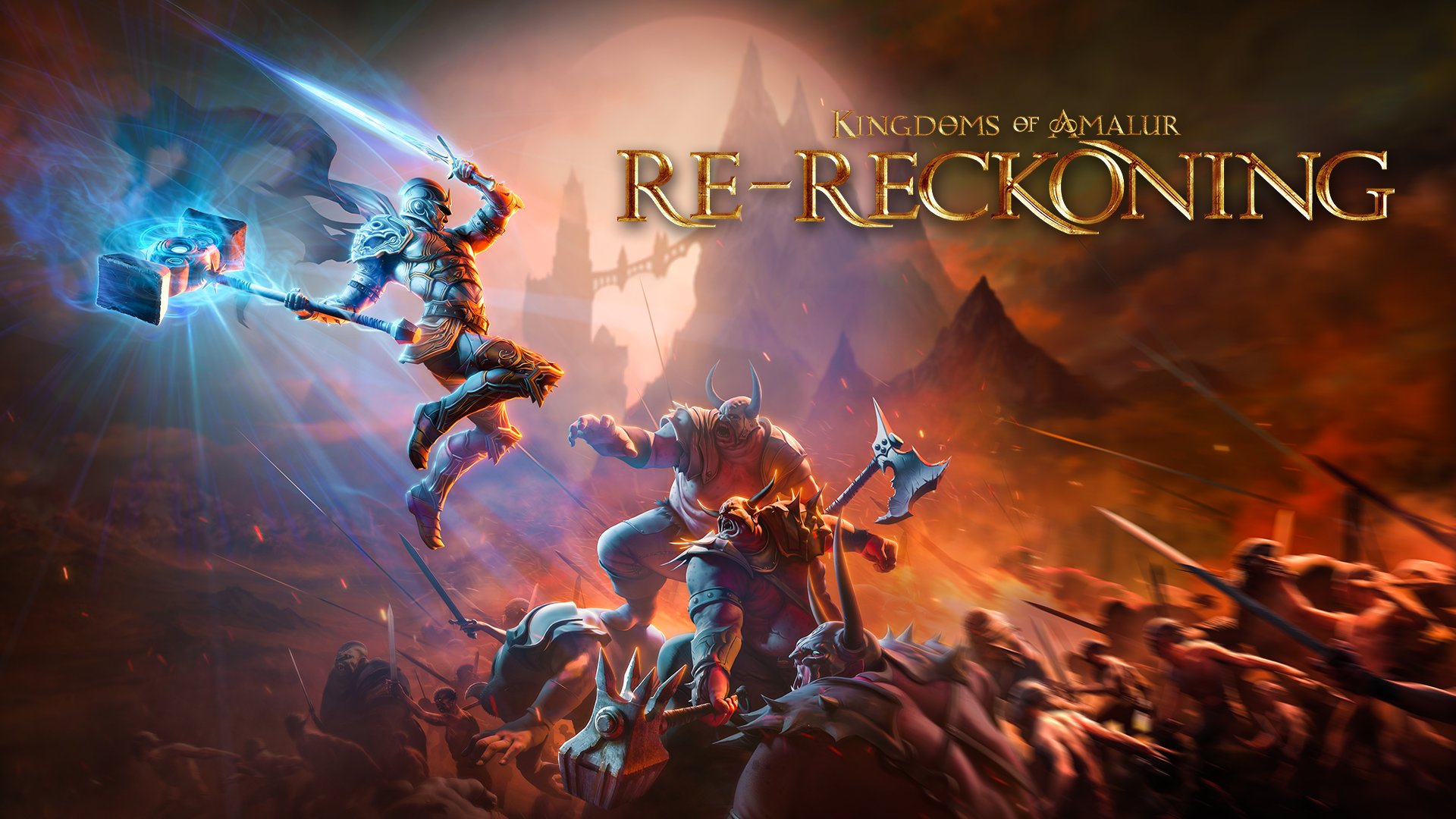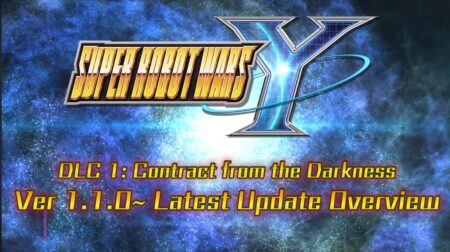Remasters and remakes have resurfaced and relaunched some of our most memorable and favorite video games of the past. A lot of them are welcome additions to our current libraries, allowing us to relive our fondest childhood memories, and some are better left untouched. Kingdoms of Amalur is the latest game from the previous generation to be brought back to the current in the form of a remaster. How does it hold up? Let’s talk about it.
Kingdoms of Amalur: Re-Reckoning is a remastered version of 2012’s Kingdoms of Amalur: Reckoning, developed by Big Huge Games and 38 Studios. This version of the game came to be after THQ Nordic purchased the rights for the series and it is slated to come out on September 8, 2020.
RPGs were incredibly big back then (still is), and although Kingdoms of Amalur was dwarfed compared to the RPG giants of the time, it was very well received when it came out in 2012. The game didn’t make much in terms of sales, but those who were fortunate enough to get their hands on it were treated with an exciting RPG with all of the best elements and gameplay the genre has to offer.
And now, we have a remastered version of it.
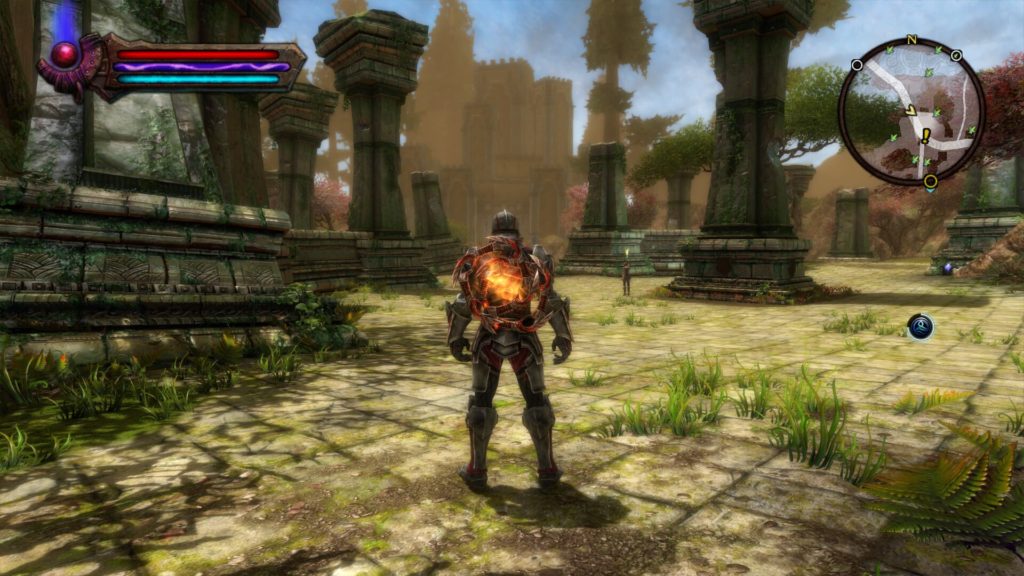
Between then and now, there are very minimal changes in terms of graphics and gameplay. THQ Nordic specified that this game would just retouch the textures and details and refine the gameplay and not completely overhaul the game, but the retouched textures, lightings, character details, and so forth are very minuscule. The most apparent changes you’ll notice are the foliage textures and the cutscenes. The overall environment looks fine, but it’s not very spectacular as a remaster. The game does shine for a little bit on brighter levels. The water textures look surprisingly amazing as well, with it being a stand-out compared to its surrounding environments.
The framerate runs smoothly most of the time, with instances of it dropping whenever there are multiple enemies on the screen or multiple spells are being cast.
There are also a ton of graphical bugs that could use a future fix. You’ll sometimes encounter lightings projecting in a really broken manner, bodies of dead enemies will often time just glitch and have broken dimensions, NPCs become invisible during conversations, and many enemies will have problems rendering properly if you run towards them.
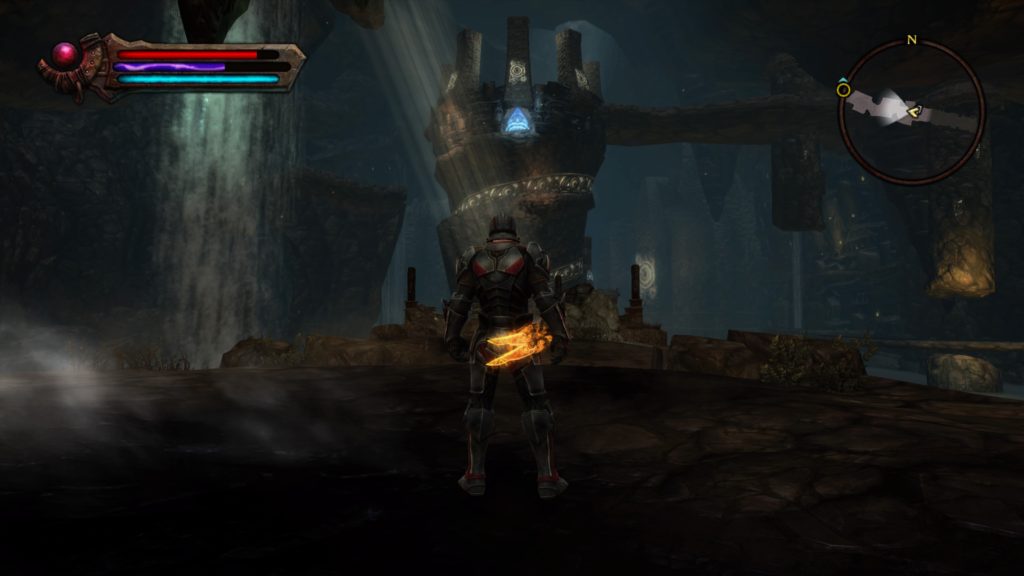
While the graphics and textures don’t really look that much impressive for a remastered game, the overall designs do look fairly attractive–especially the apparel and weapons. The apparel and weapons you’ll be able to equip in the game look very awesome. There are a ton of them you can choose from and some can form a set that will give you perks if you equip them all. This is an RPG element the game does right and I found myself scouring the world looking for weapons and armors that don’t only make my character stronger, but also make him look wondrous.
The game’s music is very noteworthy. It’s the perfect sound of epic that completely complements the fantasy and magical nature of the game. It hypes you up, calms you down, and makes you move. The same cannot be said for a few of the game’s sound effects, though. Often times you’ll hear environment sounds that seem just a little bit off. For example, the sound of pots and glasses breaking sound like they were recorded from an old phone. You’ll also hear excessive screeching in places there shouldn’t be sounds like that. You’ll hear drops of water in places where there is no water source nearby. It just takes you out of the experience and it breaks the immersion.
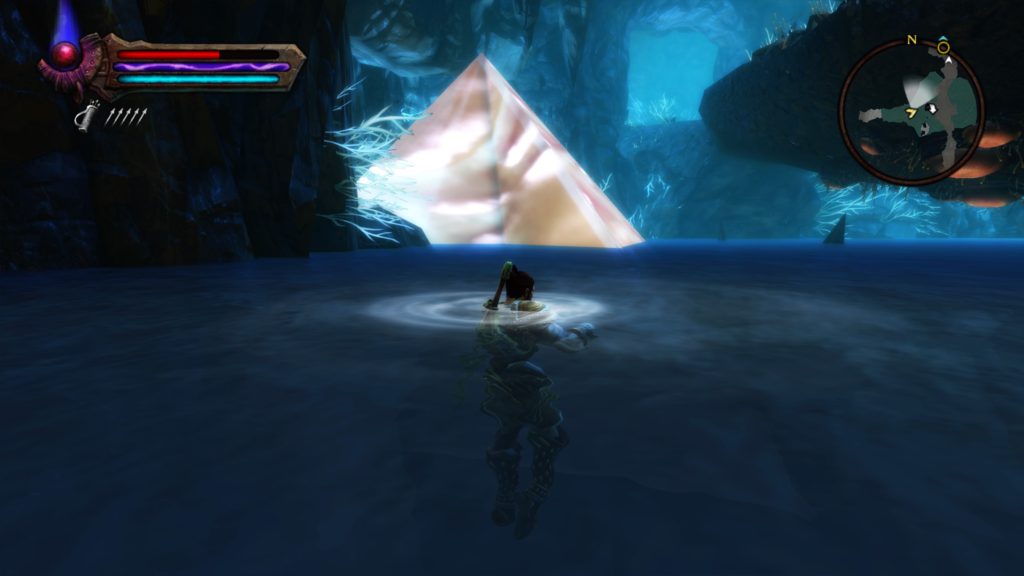
The voice acting in the game is decent, to say the least. A few of them can be construed as “amateur,” but they are very minimal. It’s done well most of the time. Voices match their characters and personalities. It’s the right amount of majestic and playful. The facial and body movements don’t always match what’s coming out of the character’s mouths, though. You’ll sometimes see an NPC move like they’re laughing, but they’re dialoguing a complete sentence.
Now, let’s talk about this game’s best strength–the actual gameplay.
The gameplay is really, really fun. A founder of 38 Studios described the gameplay as a mixture of God of War and Elder Scrolls, and that’s just the right way of putting it. It incorporates the hack-and-slash combat of the old God of War games, and its exploration is heavily inspired by Elder Scrolls. Players will be able to mix melee, range, and mage combat really smoothly. Controls aren’t clunky and if you prefer to melee your way through all the way, you can. If you want to add a few range hits in, you can. If you want to spice it up and do a few spells to inflict elemental damage, and just feel a little bit cooler all-in-all, you can. You can also superpower yourself via the “Reckoning Mode” which is very helpful when faced with incredibly tough enemies. The combat gameplay can be really diverse and its the game’s best dish on the table.
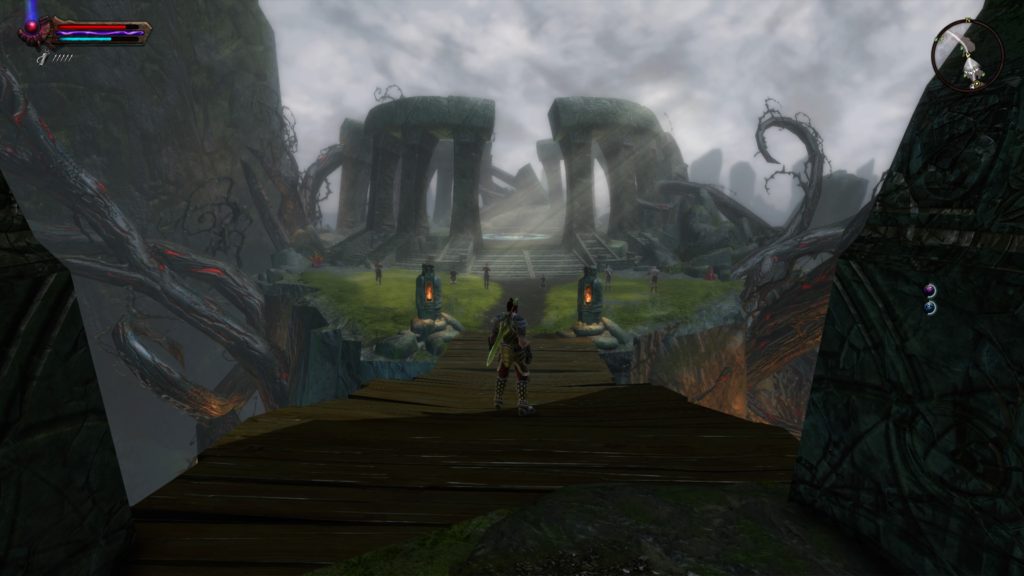
Exploring the world is also be really fun. You’ll have to travel and run around the map quite a lot in this game, but it rarely feels tedious. You’ll find a lot of things to do and discover as you explore the world. You’ll encounter Lorestones to help you further understand the backdrop of the narrative, there are enemies of varying difficulties, you’ll have hidden items to discover, and so much more. It’s a very fun open-world game with so much to offer and if you want to do side quests if main quests become too demanding, you’ll have no shortage of that.
Speaking of the main quest, the game’s overall plot and narrative are very interesting too. You play as the “Fateless One,” a character who seemingly escapes death and is unbeholden to fate. The protagonist’s origin is a complete enigma and the game dances around this very well from beginning to end. As you uncover the secrets of your past, you get caught up in this battle between good and evil and you must now not only discover yourself but also be a hero of the land.
The overall story is decent enough. It’s your typical battle between forces of good and forces of evil, but behind that is an incredible world-building with undertones of class and race divide, where one specific class isn’t exclusively evil and the other isn’t exclusively good. The whole story runs with this quite well and while the narrative at the forefront is simple enough, the lore behind it is pretty fun and satisfying to uncover.
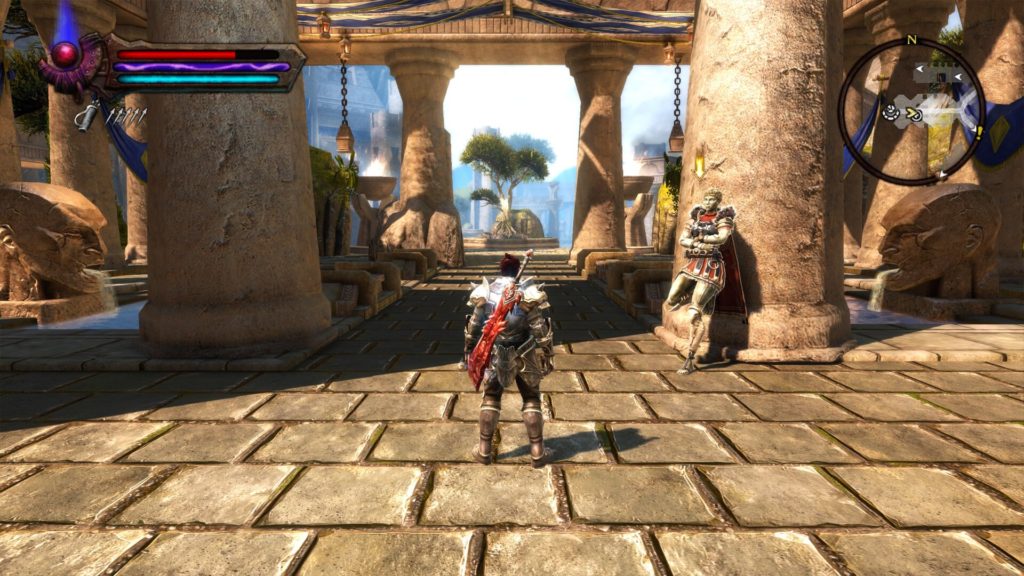
This remaster does come with the two DLCs that we’re released a couple of months following the base game in 2012. These two DLCs are very self-contained and it does offer new things in terms of enemies and inventory availability. The Legend of Dead Kel DLC is full of fun and interesting characters with a fairly straightforward story, and the Teeth of Naros has a very fantastical storyline that can be needlessly convoluted, but does add to the overall lore and has a satisfying ending.
Whether you’re a fan of the original game or you haven’t played that and are just planning to explore a new open-world RPG, Kingdoms of Amalur: Re-Reckoning is a must-try for its fun combat, exploration, interesting narrative, and the wide experience it provides. Kingdoms of Amalur: Re-Reckoning may not be that compelling as a remastered work, but what it already is is quite compelling enough.



